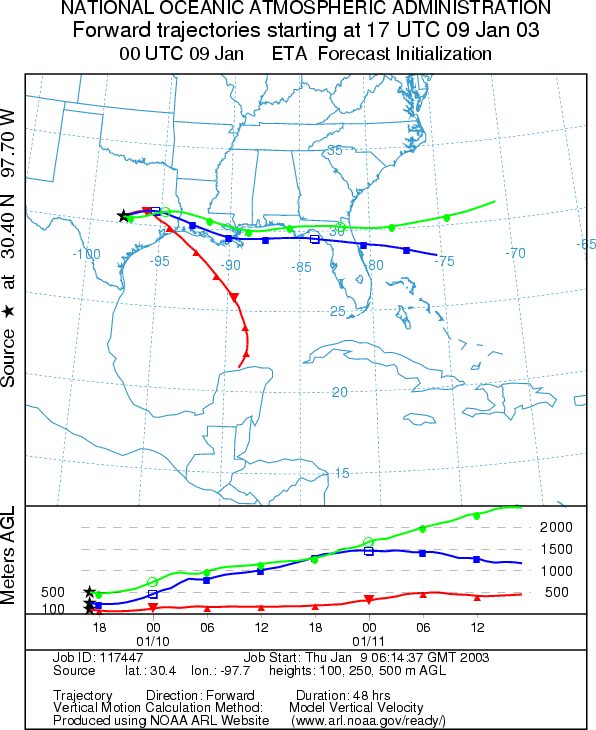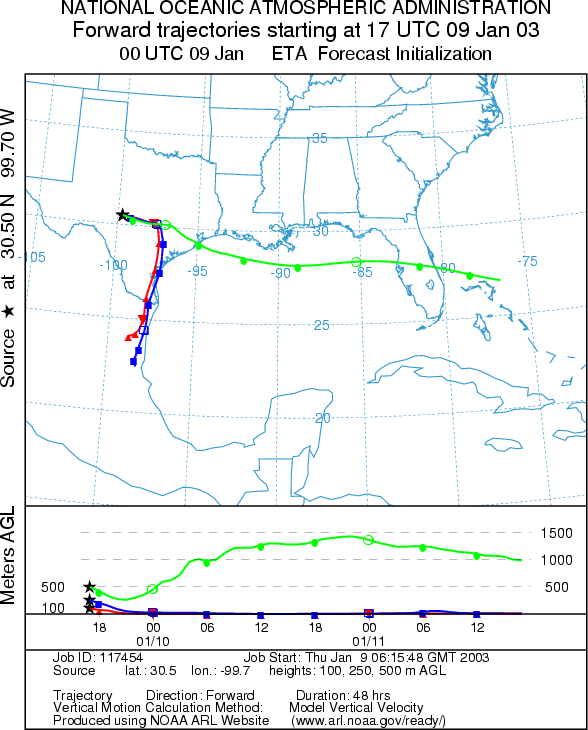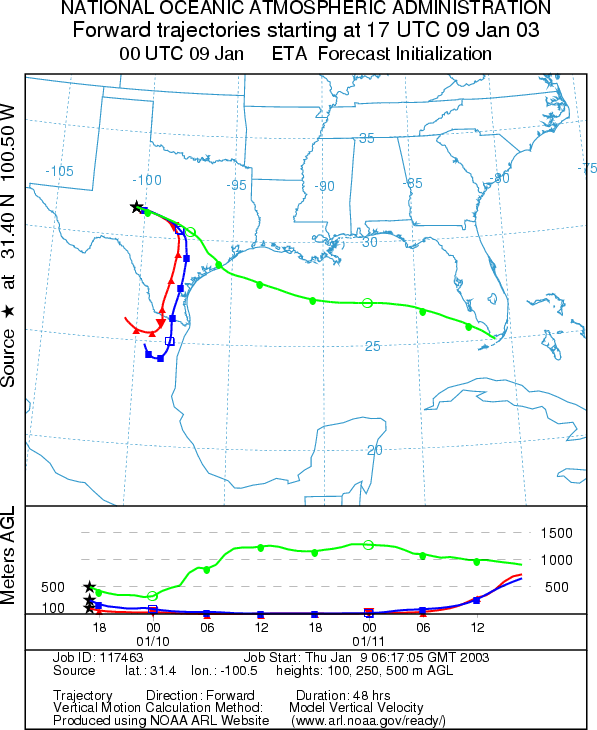The
Mountain
Cedar Pollen Forecast
Metropolitan Area |
Exposure Risk |
|
|
Moderate |
|
|
Severe |
|
|
Severe |
Date Issued:
Mountain Cedar Location(s):
Regional Weather: Thursday, January 9 TX/OK/AR: High pressure will be moving towards the east and one last day of warm conditions will occur before cooler weather moves into the region. Skies today will be partly cloudy to the north in Oklahoma and to the south in southern Texas. Cold air is beginning to push into the area and will continue throughout the day eventually affecting the trajectories across the region. High temperatures across the southern area of the Edwards Plateau will reach the upper 70s today with partly sunny skies and low humidity. Winds will be light tonight but increase to moderate to strong conditions from south to north. Low temperatures overnight will be from the mid 30s to mid 40s. On Friday, cooler temperatures will begin to work their way into the area dropping temperatures by 10 to 15 degrees across the area. Winds on Friday will slacken to moderate conditions across the region. In Oklahoma, cooler conditions will arrive today with partly cloudy skies and strong winds from the north. Temperatures will only reach the mid to lower 50s across the region. Temperatures overnight will be well below freezing in the mid 20s and then rise by less than 10 degrees for highs on Friday. Winds will relax on Friday from strong to moderate strength out of the north.
Trajectory weather: The air mass trajectories from eastern Edwards Plateau of Texas move to the east towards southern Louisiana and the Gulf coast. The trajectories show buoyant atmospheric conditions with the upper most trajectory moving quickly to the east on sustained winds of the southern branch of the jet stream. The western Texas trajectories also move towards the east but are then turned due south by the influx of cold air from the north. Each of the trajectories then tracks towards the southern Texas border into northern Mexico and the Mexican gulf coast. The lower elevation winds move along the ground surface whereas the upper most trajectories get caught in the southern jet stream and move quickly to the east. The eastern trajectory shows characteristics that are associated with entrainment and movement of pollen away from the source area, versus the western trajectories that move along or near the ground, conditions that tend to filter out any pollen entrained within the air mass. Conditions at the sources will be warm and dry with moderate winds and partly cloudy skies. The trees are nearing the peak of the pollen release season so significant pollen release is expected.
OUTLOOK: *** Severe Threat today ***favorable conditions for pollen release today. Partly cloudy skies, but low relative humidity and warm temperatures with moderate
to strong winds result in favorable conditions for pollen release.
The trees are nearing their peak release period so significant pollen
release is expected across the population.
Trajectory characteristics from the western side of the Edwards Plateau
show poor travel conditions with the air masses sinking and moving along the ground.
The easterly trajectories are turned abruptly southward as cold air moves
into the region. The
eastern trajectory shows characteristics associated with significant amounts of pollen entrainment and travel. The winds will
move over the main population before heading southward and, with favorable conditions for pollen release, are capable
of moving significant amounts of pollen. The trajectory characteristics suggest that the areas on the eastern side of the population
will move further downwind with the pollen from the western areas moving closer to the ground.
For these reasons a severe
threat exists, which should more accurately be described as conditions
that will vary from east to west. All trajectories move initially towards the east so a severe threat exists for Austin, Waco, and
southeastern Texas
communities such as College Station and Houston. In addition, areas of southern
Texas should also see pollen in their atmosphere, especially areas
close to the Edwards Plateau such as San Antonio and
New Braunfels.
Trajectory Start (s)
(shown by *
on map):

Junction, TX


Prepared by: Peter
K. Van de Water (Department of Geoscience,
Questions: Aerobiology Lab e-mail: pollen@utulsa.edu
Return to Forecasting Home Page